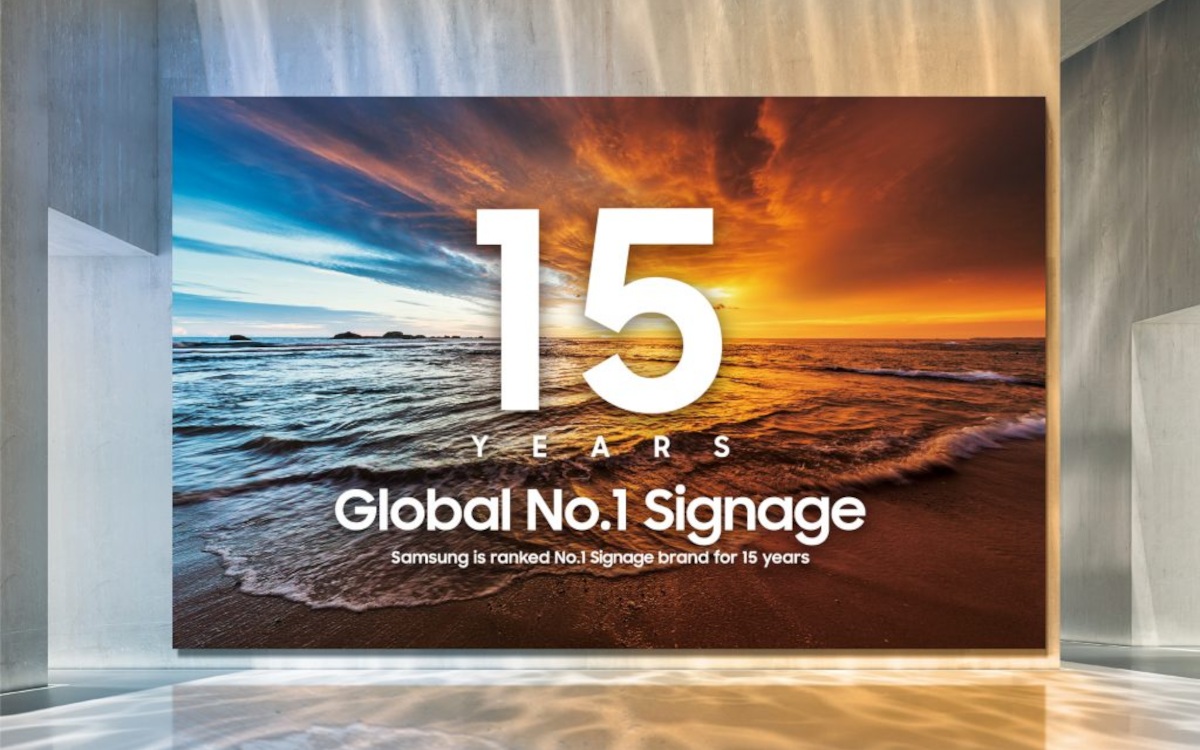Samsung has been the global market leader in the digital signage market for 15 years. According to market researcher Omdia, every third professional display shipped worldwide featured a (removable) Samsung logo last year. In total, the Koreans sold more than 2 million professional displays worldwide in 2023.

Digital Signage: Samsung Market Leader for 15 Years
At first look its not a surprising news: Samsung is the uninterrupted global digital signage market leader for 15 years. A remarkable achievement – every third professional display sold in 2023 bears the Samsung logo. According to Omdia, Samsung reached a 33 percent market share in 2023.
The global display signage market is expected to continue to grow at an annual rate of approximately 8%, resulting in a projected market size of USD 24.6 billion by 2027. This represents a significant increase from USD14 billion in 2020.
Initially Samsung was late to the Game
I still remember my first ISE trade shows with no signs of Samsung anywhere. It was not until 2008 that Samsung presented its first professional digital signage screen (at Cebit) and dominated the global market within a year. Since 2009, Samsung is holding global market leadership ever since according to Omdia.
In the first decade of the new millennium – the large-format LCD flat screen had just been invented (2001) – Panasonic, Pioneer, Sony, Sanyo and NEC were major digital signage manufacturers. Neither Samsung nor LG played a relevant role at the beginning of the digital signage market after the turn of the millennium.
Samsung disrupted and dominated the market within a year in particular because of its own LCD panel development and manufacturing facilities. Both Korean display giants only stopped manufacturing their own panels recently. Today Samsung and LG procure LCD panels – like most competitors – mainly from BoE & Co. in China.
From display to Tizen and VXT
Product development and the assembly of LCDs, which takes just 10 minutes, still takes place in the company’s own factories. So a Samsung is still a Samsung – but product differentiation is increasingly taking place at the operating system level, with software like the new VXT platform and with IoT platforms (Smartthings).
Of course, standard displays from Samsung & Co. also differ in product design, form factor, material selection and sustainability aspects. But the differences have become increasingly small. Even if LCD displays will remain the bread and butter business in terms of quantity for the foreseeable future, the music is increasingly playing with (micro)LED and especially with platforms such as VXT.
With The Wall (microLED), Tizen (operating system) and VXT (experience platform), Samsung is very well positioned to defend its combined digital signage market leadership (LCD+LED) in the coming years.
